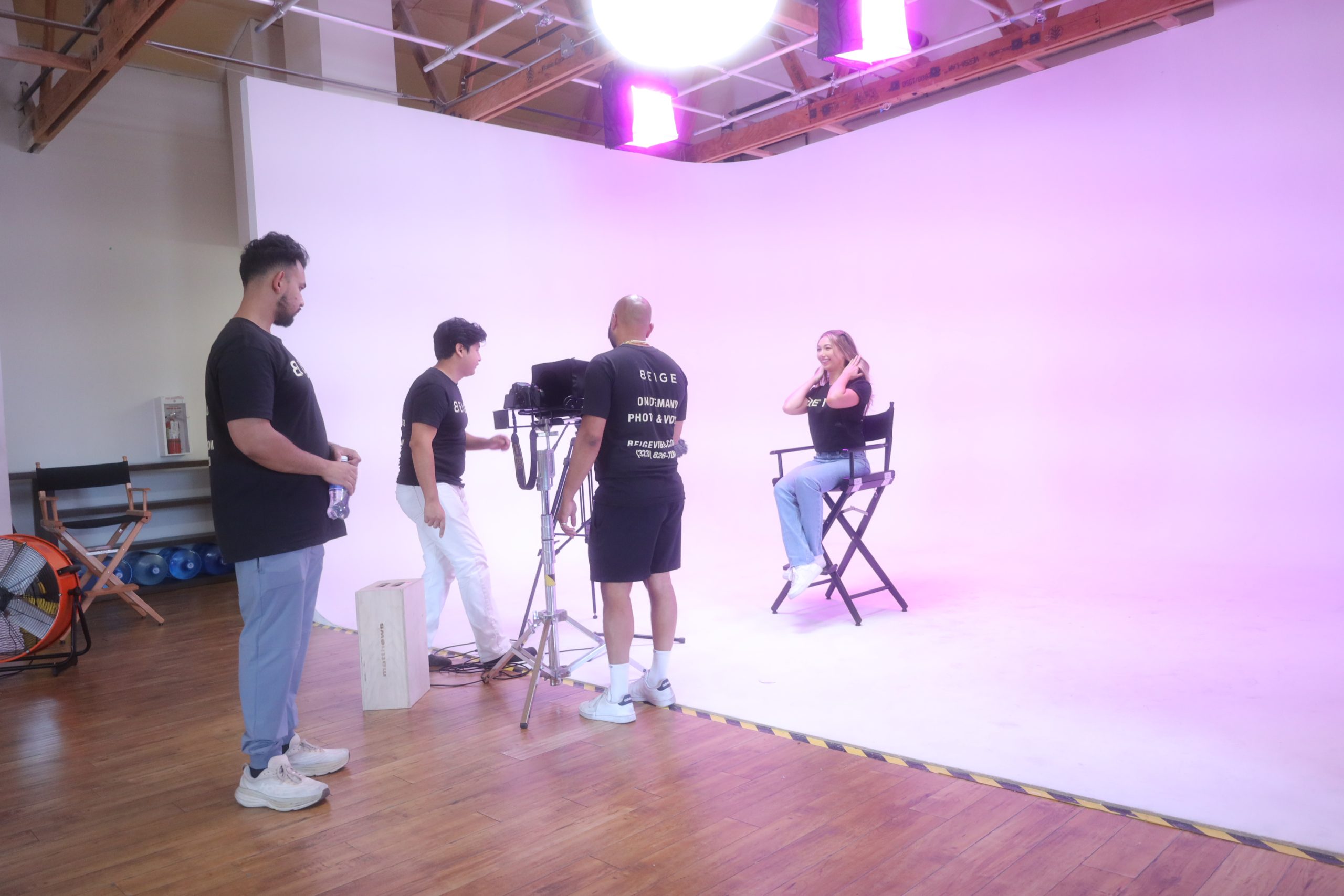No products in the cart.

Engagement Photo Session Tips: A Comprehensive Guide
Introduction: Everyone dreams of receiving a romantic proposal from their significant other. It resembles a childhood fantasy coming to pass. It really is a
Sunny lighting, also known as natural lighting or daylighting, refers to the utilization of natural sunlight to illuminate indoor spaces. It involves strategically designing and arranging windows, skylights, and other openings to maximize the entry of natural light. Sunny lighting not only provides adequate illumination but also offers several benefits for physical and mental well-being.
Understanding the key components and working mechanisms of sunny lighting is essential to optimize its benefits. By harnessing the power of natural light, sunny lighting can positively impact mood, productivity, visual acuity, and even regulate circadian rhythms.
The benefits of sunny lighting include:
To incorporate sunny lighting into your space, there are several methods you can consider. This includes utilizing natural light sources such as windows, skylights, or light tubes. choosing appropriate light bulbs and fixtures that mimic natural light can also contribute to creating a sunny atmosphere. It is important to pay attention to light intensity and color temperature to achieve the desired effect.
While sunny lighting has numerous benefits, it is essential to be aware of potential risks and take necessary precautions. These may include overexposure to harmful UV rays, which can be mitigated by using UV-protective window films or shades. prolonged exposure to bright light may cause eye strain and discomfort, highlighting the importance of proper lighting design and breaks. Lastly, managing time and exposure to ensure a healthy balance is crucial.
By understanding the concept of sunny lighting and implementing appropriate strategies, you can create a bright and inviting space that positively impacts your well-being and productivity.
“Sunny lighting” refers to the natural sunlight that illuminates a space, acting as the direct source of light during the day. This type of lighting is known for its numerous beneficial effects on our overall well-being. It boosts mood, improves productivity, and helps regulate our sleep-wake cycle. Sunny lighting provides us with the full spectrum of light, including essential blue light that contributes to our overall health. To fully embrace sunny lighting indoors, it is advisable to maximize the use of natural light through the utilization of large windows, skylights, and light-colored walls. By incorporating sunny lighting into your daily routine, you can create an atmosphere that is vibrant, energetic, and conducive to a positive environment.
How Does Sunny Lighting Work?
Sunny lighting works by harnessing the power of natural sunlight to illuminate spaces and provide a warm, inviting atmosphere. Here’s how it works:
What Are the Key Components of Sunny Lighting?
The key components of Sunny Lighting include:
| Full Spectrum Bulbs | High CRI (Color Rendering Index) | Adjustable Intensity | Color Temperature Control | Diffusers and Reflectors |
|---|---|---|---|---|
| These bulbs emit a balanced spectrum of light that closely mimics natural sunlight. | This measures how accurately a light source renders colors. Sunny Lighting has a high CRI, making colors appear more vibrant and true to life. | Sunny lighting systems allow users to adjust the intensity of the light to suit their needs and preferences. | By controlling the color temperature, Sunny Lighting can provide warm, cool, or neutral light, creating the desired ambiance. | These components help distribute and diffuse light evenly, reducing glare and creating a soft and comfortable lighting environment. |
These key components work together to create an indoor lighting experience that closely resembles natural sunlight, providing various benefits to users’ mood, productivity, and overall well-being.
Step into the light with sunny lighting! Discover the array of benefits that await you in this illuminating section. From boosted moods and increased productivity to sharper vision and regulated sleep, we’ll explore how sunny lighting can enhance your well-being, alertness, visual acuity, and circadian rhythms. Get ready to bask in the advantages that sunny lighting brings to your life!
Improved mood and well-being are key benefits of incorporating sunny lighting in your space. By utilizing natural light sources or high color temperature light bulbs, you can enhance the overall ambiance and create a more uplifting atmosphere. The bright and natural light aids in stimulating the production of serotonin, a hormone that boosts feelings of happiness and well-being. This, in turn, has a positive impact on your mood, elevating your overall mental state and alleviating symptoms of depression or anxiety. Furthermore, sunny lighting helps regulate circadian rhythms, promoting better sleep patterns and improving overall well-being.
| Key Benefits of Sunny Lighting | ||
|---|---|---|
| 1. Serotonin boost: Sunny lighting stimulates the production of serotonin, promoting feelings of happiness and well-being. | 2. Reduce depression and anxiety: The uplifting atmosphere created by sunny lighting can aid in reducing symptoms of depression and anxiety. | 3. Improved sleep patterns: By regulating your circadian rhythms, sunny lighting helps promote better sleep patterns and overall well-being. |
By incorporating sunny lighting in your workspace, you can experience these benefits and optimize your productivity and alertness levels.
Enhanced Visual Acuity and Color Perception with Sunny Lighting
When it comes to lighting, sunny lighting offers numerous benefits, including improved visual acuity and color perception. Here are several ways in which sunny lighting can enhance these important aspects:
Regulating circadian rhythms is an important benefit of sunny lighting. The regulation of circadian rhythms refers to the process of synchronizing our internal body clocks, which ultimately promotes better sleep at night and overall health. An effective way to achieve this is by exposing ourselves to bright natural light during the day. By incorporating sunny lighting in our spaces, we can create a conducive environment for regulating sleep-wake cycles. It is worth noting that sunlight contains blue light, which helps suppress melatonin, a hormone responsible for regulating sleep-wake cycles. To make the most of sunny lighting, we can utilize natural light sources such as windows or skylights and opt for light bulbs with the appropriate intensity and color temperature. Additionally, managing exposure to UV rays and avoiding overexposure is crucial. Prioritizing the regulation of our circadian rhythms through the use of sunny lighting can significantly enhance our sleep patterns and overall well-being.
Looking to bring sunny vibes into your space? Discover how to incorporate sunny lighting and transform your environment. Get ready to bask in the warmth with the knowledge of natural light sources, the power of light bulbs and fixtures, and the significant role of light intensity and color temperature. Learn how to create a bright and inviting atmosphere that radiates positivity and enhances your overall well-being. Get ready for a sunny lighting revolution!
Natural light sources are an excellent way to introduce sunny lighting into your space. Harness the power of windows and skylights to allow as much natural daylight as possible. Strategically position your workspace or seating areas in close proximity to these light sources to fully optimize the advantages. If your space lacks access to natural light, you may want to consider utilizing LED light bulbs that mimic daylight. These bulbs emit a white light that closely resembles the illumination of natural sunlight. Opt for light-colored walls and furnishings to effectively reflect and enhance the natural light present in your space. By incorporating natural light sources, you can cultivate a vibrant and invigorating environment that promotes both well-being and productivity.
When incorporating light bulbs and fixtures into your space, choosing the right light bulbs and fixtures is essential. Here are some factors to consider:
The significance of light intensity and color temperature in sunny lighting cannot be exaggerated. Light intensity determines the brightness of the light, while color temperature dictates the warmth or coolness of the light.
For activities that necessitate focus and concentration, such as reading or studying, a higher light intensity is advantageous.
Conversely, for relaxation or creating a cozy atmosphere, a lower light intensity is preferable.
The mood and ambiance of a space are influenced by color temperature. Cooler temperatures (around 5000-6500K) enhance alertness and productivity, while warmer temperatures (around 2700-3000K) create a soothing and calming effect.
To maximize the benefits of sunny lighting, it is important to adjust the light intensity and color temperature based on specific activities and the desired atmosphere in each area of your space. By experimenting with different combinations of intensity and temperature, you can discover the ideal balance.
When it comes to sunny lighting, there are certain risks and precautions that we need to be aware of. From overexposure to harmful UV rays to potential eye strain and discomfort, it’s essential to understand how to protect ourselves. In this section, we’ll dive into these potential risks and explore the necessary precautions to take. We’ll also discuss the importance of proper time management when it comes to enjoying the benefits of sunny lighting while minimizing its downsides. So let’s shed some light on these crucial aspects and stay safe under the sunny skies!
Overexposure to UV rays is a potential risk associated with sunny lighting. Prolonged exposure to UV rays emitted by certain light sources can lead to skin damage, such as sunburn or premature aging. It can also increase the risk of developing skin cancer. To minimize the risk, it is important to use light fixtures that have UV filters or choose light bulbs with lower UV emissions. Limiting the time spent under direct sunlight or near bright artificial light sources can further reduce the risk. It is essential to strike a balance between enjoying the benefits of sunny lighting and protecting yourself from the potentially harmful effects of overexposure to UV rays.
Eye strain and discomfort, two common issues associated with prolonged exposure to bright or harsh lighting, can be mitigated by following these steps:
Adjust lighting levels: Avoid excessively bright or dim lighting to prevent straining the eyes. It is important to find a balance that offers sufficient illumination without causing discomfort.
Reduce glare: Minimize glare on screens or reflective surfaces by properly positioning light sources. You can also use anti-glare filters or adjust monitor settings to alleviate eye strain.
Take regular breaks: Give your eyes a break every 20 minutes or so by looking away from screens or focusing on distant objects. This practice helps relieve strain and discomfort.
Consider lighting color temperature: Opt for warm or neutral lighting as cooler colors can lead to eye fatigue. Experiment with different color temperatures to discover what suits you best.
Ensure proper lighting position: Position light sources in a way that minimizes shadows and provides even lighting throughout the space. Avoid direct lighting that directly shines into your eyes.
Inadequate lighting conditions in the early 20th century often resulted in industrial workers experiencing eye strain and discomfort. However, as awareness increased, advancements in lighting technology and ergonomic practices were introduced, leading to improved working conditions and a reduction in eye strain among workers.
Sunny Lighting offers a range of path lights that provide illumination for walkways, making your outdoor areas safer and more aesthetically pleasing. Their landscape path lights utilize solar power, eliminating the need for electricity and reducing environmental impact.
Sunny Lighting’s T8&T5 lamps are energy-efficient and provide high-quality lighting. These lamps have a long lifespan and come with a 3-year warranty, ensuring durability and peace of mind. They are suitable for various applications, including offices, retail spaces, and residential settings.
LED downlights from Sunny Lighting offer bright and focused lighting, making your home well-lit and safer. These downlights utilize LED technology, which produces minimal heat and reduces the risk of fire hazards. They also have integrated emergency battery kits, ensuring light availability during power outages.
Sunny Lighting’s string lights are a stylish and versatile lighting solution for outdoor areas. These lights are powered by solar energy, eliminating the need for an outlet. They can be easily hung on a patio or deck using screw eyes, allowing you to create a customized and on-trend atmosphere.
The LED Strip Cut to Length Form provided by SAL allows for precise customization of LED strip lights according to your specific requirements. LED strip lights are energy-efficient, have a long lifespan, and offer a wide range of color options. They can be used for various applications, including interior and exterior lighting, providing high efficiency and reducing energy consumption.
Sunny Lighting offers a range of exterior LED lighting products, including floodlights, streetlights, and architectural lights. These lights are designed to withstand outdoor conditions and provide high lumen output, ensuring a well-lit and visually appealing outdoor environment. With their stylish designs and high-quality performance, they can transform the look of your outdoor spaces.
Lorem ipsum dolor sit amet, consectetur adipiscing elit. Suspendisse varius
enim in eros elementum tristique.






